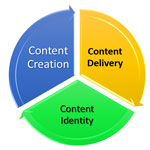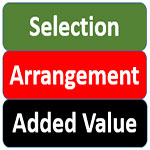Digital marketplace popularized the partial product delivery at its first stages of development.
Providing a sample chapter of a book which was not practical in the paper-era was easily substituted by digital sample chapters and even selling single chapters of the book.
Amazon thinks about new revenue models based on charging readers per every single page, which means no one has to pay for the complete book anymore.
Thanks to iTunes store, you do not have to pay for the whole album if you are interested in one of the individual tracks.
Everything seems clear and rational. Why shall I pay more when I can pay less?
This innovative revenue model of partial selling became the governing paradigm for many online digital content providers as a convincing offer for online customers.
However, there a new trend appearing in the market. A trend which gets stronger and more popular every day:
Instead of asking why shall I buy your product, the customer asks: why shall I pay for your product?
The piracy is much easier for partial products. Even search engines favor partial content providers! Just search for chapter 5 of a book and for the whole book itself. If someone put the fifth chapter somewhere on the web, with proper title and tagging, it would be ranked even higher than Amazon page of the same book!
In the same way, it’s much easier to find a single track than the whole album. Considering the time consuming and costly legal follow-up, even original content providers, do not care so much about the partial content piracy comparing to total product piracy.
So how can we charge the digital customer in a world when no one is ready to pay for the content?
Here’s the reason behind the rise of the all-you-can-eat business model.
According to John Warrilow in his book titled The Automatic Customer, the all-you-can-eat revenue model is becoming a model for content providers.
Instead of selling the whole product or a partial product, the content provider sells the access to a collection of products for a limited period.
Therefore, the content providers are moving from the single/partial product selling to the access selling. A more robust revenue model which can be less prone to piracy and more attractive to the customer.
Why shall I pay 0.99 cents for a single track or a single article every time I’m looking for something new? I’d rather have access to thousands of tracks and articles with paying a few dollars.
Although I know that my content consumption capacity is limited to a very small portion of your content, it makes me feel better.
So considering the current trends and taste of the market, it seems that the all-you-can-eat revenue model can be a successful model for the present time.
The threat of priracy will be less for the content providers and the content consumers will feel better and sure wil have a broader choice.
But it’s good to ask what will happen after this new revenue model gets mature and the content market becomes saturated with various similar all-you-can-eat content menus.





